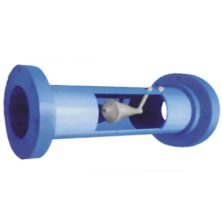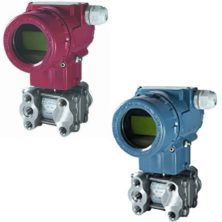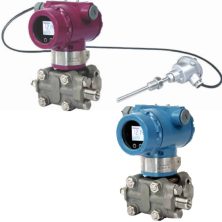Featured Products
- Acone flow element used with either ALDPT or ALDPTMV
- ½~10" (15-250 mm)
- Based on Re > 8000 For gases, liquids and steam
- 320~1500°F (-196~850 °C)
-
Liquid: ± 0.5% of reading
Gas & Steam: ± 1.0% of reading - SS #304L/SS #316L, CPVC ,PTFE, Brass, A106B A335-P11, A335-P22, Dual - Phase Steel, Inconel 625, Hastelloy C276
- 4~20 mA square root output, HART, MODBUS
- NPT, flanged (JIS, ANSI and DIN), wafer or butt weld
- Where space is limited; reduced straight pipe requirements of 0-3 D upstream and 0-1 D downstream
- Any application where the flow engineer prefer DP flow meters; extreme high temp applications
- Differential Pressure
- Any
- Available for DP of up to 0 -2Mpa (290 PSI)
- –4-752°F(-20- 400)°C
- ±0.5%, ±0.2%, ±0.075% of reading
- SS #316L, Hastelloy C, Tantalum, Gold Plated
- 4~20 mA square root output, HART, MODBUS
- ¼“-18 NPTF & ⁷⁄₁₆"-20 UNF, no drain or with drain top, side or bottom of flange
- 3 or 5-way valve manifold for primary DP flow element (ACONE), 2" pipe mounting brackets, O2 cleaning, capillaries (many fill fluids)
- Stand alone DP measurement or with primary flow elements: Orifice, Venturi, ACONE, Pitot Tube, Wedge, Elbow
- Multi-variable Differential Pressure
- Any
- Based on DP of 0 -2Mpa (290 PSI)
- –4-752°F(-20- 400)°C
- ±0.2%, ±0.075% of reading
- SS #316L, Hastelloy C, Tantalum
- 4~20 mA square root output, HART, MODBUS
- ¼“-18 NPTF & ⁷⁄₁₆"-20 UNF, no drain or with drain top, side or bottom of flange
- 3 or 5-way valve manifold for primary DP flow element (ACONE), 2" pipe mounting brackets, O2 cleaning, capillaries (many fill fluids)
- Where multiple parameter measurement such as flow, DP, temperature, mass flow is required from one instrument
Differential Pressure Flow Meter Overview
Smart Measurement Differential pressure flowmeters consist of two key components. All Differential Pressure flow meters, also known as DP flow meters, make use of a flow body which is installed in the pipeline to cause a constriction in the flow path, which in turn creates a pressure drop. These are sometimes referred to as primary elements and there are serval different types, including orifice plate, venturi, cone, nozzle, wedge, or cone types, each having various geometries and constrictions.
The second component in this type of system is a differential pressure transmitter which measures the differential pressure across the primary element and then sends the readings to a control system. When the primary element is used in conjunction with a differential pressure transmitter, the volumetric flow rate may be calculated as a function of the differential pressure across the obstruction; hence the term “differential pressure flow meter”.
How to Choose a DP Flow Meter
Advantages of Differential Pressure flow meters include minimal maintenance, improved particle tolerance, and higher temperature operation versus mechanical flow meters such as turbine and positive displacement. Differential Pressure measurement is the most widely measured variable in industrial process control applications. Differential pressure meters are commonly used in applications involving all media phases, including liquid, gas, and steam. For example, in the oil & gas industry, wellhead flows are measured in subsea and topside locations.
Special Cases
The Smart Measurement ACONE differential pressure flowmeter is designed for the harshest operating environments and the widest variety of fluids. This element type consistently outperforms traditional ΔP devices and other major flow technologies. The ACONE’s enhanced performance is due to the shape and position of the cone-shaped obstruction inside the flow body in relation to the ΔP measurement ports. The cone interacts with the flow, reshaping the fluid’s velocity profile and creating a region of lower pressure immediately downstream of itself. Two pressure taps are designed to measure the differential pressure between the static line pressure and the low-pressure zone created downstream of the cone. Flow is calculated by the Bernoulli equation of conservation of energy. The cone element also acts as its own flow conditioner, fully conditioning any turbulence in flow due to limited upstream and downstream straight runs.
The ACONE is used with Smart Measurement’s ALDPT, temperature, and flow computer to measure volumetric flow and mass flows. Smart Measurement’s ALDPT-MV utilizes temperature pressure sensors to temperature measurement along with DP with an integrated flow computer to provide flow, mass flow, pressure, and temperature outputs.
Request a quote on Differential Pressure (DP) flow meters for your application or contact Smart Measurement to learn more.
Key Applications
Differential Pressure flowmeters from SmartMeasurement have been successfully installed in a wide variety of industries and applications, including:
- Replacing older primary flow elements
- High pressure and/or high temperature
- DP measurement across filters
- Heat exchangers
- Large air ducts
- Oil and gas
- Power plants
- Marine and shipping
Advantages of Using Differential Pressure Flow Meters
The SmartMeasurement ACONE differential pressure flowmeter is designed for the harshest operating environments and for the widest variety of fluids. This element type consistently outperforms traditional ΔP devices and other major flow technologies. The ACONE’s enhanced performance is due to the shape and position of the cone-shaped obstruction inside the flow body in relation to the ΔP measurement ports. The cone interacts with the flow, reshaping the fluid’s velocity profile and creating a region of lower pressure immediately downstream of itself. Two pressure taps are designed to measure the differential pressure between the static line pressure and the low-pressure zone created downstream of the cone. Flow is calculated by the Bernoulli equation of conservation of energy. The cone element also acts as its own flow conditioner, fully conditioning any turbulence in flow due to limited upstream and downstream straight runs.
Since pressure drops are one of the biggest concerns for the DP flow measurement method, SmartMeasurement only offers one type of flow element, which is the style that has demonstrated the lowest pressure drop among all primary flow elements. This element is known in the industry as a cone-type element and is offered as the SmartMeasurement ACONE. In addition to lower pressure drops, the ACONE also offers dramatically reduced straight run requirements versus other primary elements such as the orifice plate or venturi. When paired with the ALDPT differential pressure transmitter, the SmartMeasurement ACONE provides a complete flow measurement package for liquid, gas, or steam applications. When used with the ALDPT-MV and an RTD temperature sensor, the ACONE is part of a complete system that is capable of calculating both mass and volumetric flow rates. SmartMeasurement Pressure Transmitters.
Theories of Operation
Differential Pressure flow meters, also known as DP flow meters, make use of a flow body that is called a primary element which is installed inside of a pipe in order to cause a constriction in the flow path which in turn creates a pressure drop. When the primary element is used in conjunction with a differential pressure transmitter, the volumetric flow rate may be calculated as a function of the differential pressure across the obstruction; hence the term “differential pressure flowmeter”.

DP flow measurement is one of the oldest flow measurement technologies and dates back to at least the 17th century — though the measurement of flow using nozzles actually goes all the way back to Roman times. In 1738, Daniel Bernoulli developed his famous equation for flow rate calculation which shows that increasing flow velocity by constricting a flow path increases fluid flow pressure. Restricting the flow path creates an increased pressure and if you can measure the upstream and downstream pressure, you can calculate the flow.

Pressure drops are one of the biggest concerns for DP flow measurement, SmartMeasurement only offers one type of flow element, which is the style that has demonstrated the lowest pressure drop among all primary flow elements when comparing to orifice plates or other DP primary elements.


The cone element also acts as its own flow conditioner, fully conditioning any turbulence in flow due to limited upstream and downstream straight runs


.



